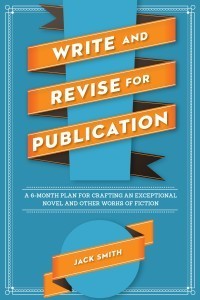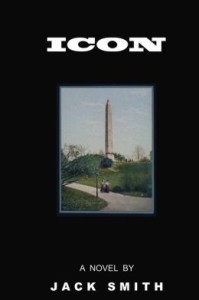Creating Antagonists in Your Fiction
Guest Post by Jack Smith
Antagonists can be persons or larger forces—groups, institutions, the society as a whole, nature, or the cosmos. Plots dealing with larger forces tend to embody conflicts with individuals as representative of these larger forces. In conflicts with nature, individual antagonists can complicate these conflicts.
Let’s concentrate, then, on individuals…
Make sure your antagonist isn’t a one-dimensional or cardboard character, but is multi-dimensional—a worthy character to do battle with.
Avoid overshadowing your protagonist, but make your antagonist interesting enough to engage the reader; make him or her somewhat sympathetic, or at least empathetic, someone the reader can relate to. Namely:
–Include a few individualizing traits, ones that create interest
–Give him a few biases or prejudices.
–For an interesting balance, find one or two things we might like about this antagonist
–Make him fallible: Even if your antagonist is cunning and shrewd, have him stumble, mess up, or overlook a thing or two.
–Give your antagonist believable motivations.
–Give him an agenda of some kind, even if it’s not absolutely clear to the antagonist himself.
–If, a time or two, your antagonist overshadows your protagonist, this can work. Just make sure it’s not the general case. (Unless you want an anti-hero, but that’s a different story.)
In the case of two protagonists, each might view each other as antagonists. In this case, develop each fully, though you need to decide whose story, in the overall, it is.
–Make each a round or multidimensional character
— Make sure each is a dynamic character, one that can change. Create a character arc for each that is believable and compelling.
–Create each as a sympathetic or at least empathetic character
–Decide if one’s protagonist’s story is more important than the other’s, or if they are equally important, consisting of two sides of one coin. Should one win out over the other? Or should it be a draw?
Decide on your antagonist’s role in terms of your protagonist’s arc. This role can vary:
–The antagonist can serve to unsettle the protagonist in his beliefs or patterns of behavior. This can cause the protagonist confusion, pain, or anguish, but ultimately make the protagonist stronger (e.g. rite of passage)
–The antagonist can mirror some moral or psychological weakness in the protagonist, something that needs to be worked out for the protagonist to reach wholeness. To the extent that this is the case, the antagonist becomes a psychic projection of some sort for the protagonist himself.
–The antagonist can represent the protagonist’s worst fears, something the protagonist ultimately needs to confront.
–The antagonist can represent a challenge that the protagonist has long desired to defeat.
Determine how the antagonist will help drive the plot, deciding how the protagonist will respond to a perceived or real threat:
–The protagonist may tend to react mostly—not precipitate action. The protagonist isn’t the type who confronts trouble but hopes the problem will go away.
–The protagonist may bide his time but plan a confrontation, or aggressive action, at the most convenient time or strategic point.
–The protagonist may initiate aggressive action, thinking: “Settle it and be done with it.”
Plot-wise, don’t stack the deck against the antagonist. Make sure it’s a believable struggle to the end.
Readers want the conflict to come out of the characters and not from authorial manipulation. Authorial deck stacking causes:
–the antagonist to be cheapened, however much you’ve developed this character as many-sided
–the protagonist to secure a win too easily, which doesn’t seem genuine, but a calculated trick or artifice
–the ideas and themes of the work to be suspect
What is a story or novel without an antagonist? Perhaps there are several antagonists, serving secondary roles, prodding the protagonist in various ways and resulting in measurable movement and growth. Yet perhaps your story or novel deals with one character whose struggle is mostly internal. Then isn’t this the so-called “man against himself” pattern? In this case, protagonist and antagonist reside in one character? Two selves at odds? I think we can safely say that in calling for conflict, fiction calls for antagonists of one kind or another, presenting varying degrees of friction for the protagonist to deal with or overcome. The challenge is making antagonists function well in your fiction—in terms of both character and plot.
Jack Smith is author of the novel Hog to Hog, which won the George Garrett Fiction Prize (Texas Review Press. 2008), and is also the author of Write and Revise for Publication: A 6-Month Plan for Crafting an Exceptional Novel and Other Works of Fiction, published earlier this year by Writer’s Digest. His novel ICON was published in June 2014 by Serving House Book
Prize (Texas Review Press. 2008), and is also the author of Write and Revise for Publication: A 6-Month Plan for Crafting an Exceptional Novel and Other Works of Fiction, published earlier this year by Writer’s Digest. His novel ICON was published in June 2014 by Serving House Book
 Over the years, Smith’s short stories have appeared in North American Review, Night Train, Texas Review, and Southern Review, to name a few. He has also written some 20 articles for Novel & Short Story Writer’s Market, as well as a dozen or so pieces for The Writer.
He has published reviews in numerous literary journals, including Ploughshares, Georgia Review, Missouri Review, Prairie Schooner, American Review, Mid-American Review, and the Iowa Review.
Over the years, Smith’s short stories have appeared in North American Review, Night Train, Texas Review, and Southern Review, to name a few. He has also written some 20 articles for Novel & Short Story Writer’s Market, as well as a dozen or so pieces for The Writer.
He has published reviews in numerous literary journals, including Ploughshares, Georgia Review, Missouri Review, Prairie Schooner, American Review, Mid-American Review, and the Iowa Review.
The post Creating Antagonists in Your Fiction appeared first on Elizabeth Spann Craig.



